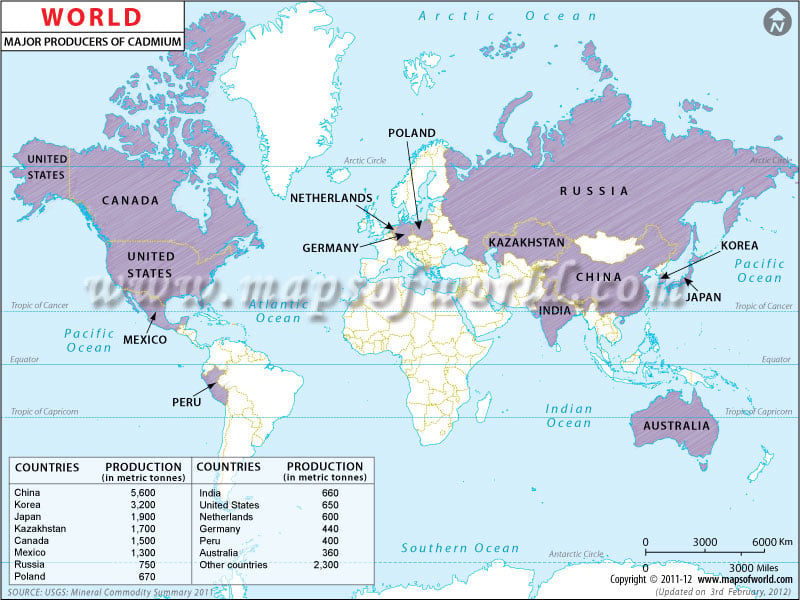Cadmium is a soft, bluish-white metal bearing close resemblance to zinc and mercury. Malleable, ductile, and having high resistivity to corrosion, cadmium is used as a protective layer when deposited on other metals. the metal has many industrial uses as well; it is a major component in battery production and is used in electro-plating. About three quarters of the cadmium consumed annually is used to make batteries.
In powdered form, cadmium is inflammable and releases toxic fumes while in solid form, cadmium can not be burned and is insoluble in water.
The production of cadmium in the recent years has declined because of its undesirable presence in fertilizers and environmental concerns forbid the production of the metal. This has overshadowed the positive industrial applications of the metal leading to lesser production.
The World Map of Cadmium Producers shows a list of the major countries producing cadmium in vast quantities. As the data in the map shows, China leads the world in the production of cadmium; in 2010 the country produced over 5600 metric tonnes of cadmium.
Korea is the second-largest cadmium producer with an annual production of 3200 metric tonnes of the metal. The third place is occupied by Japan followed by Kazakhstan, Canada, Mexico, Russia, Poland, India, United States, Netherlands, Germany, Peru, and Australia.
| RANK | COUNTRY | PRODUCTION IN METRIC TONNES |
| 1 | China | 5600 |
| 2 | Korea | 3200 |
| 3 | Japan | 1900 |
| 4 | Kazakhstan | 1700 |
| 5 | Canada | 1500 |
| 6 | Mexico | 1300 |
| 7 | Russia | 750 |
| 8 | Poland | 670 |
| 9 | India | 660 |
| 10 | United States | 650 |
| 11 | Netherlands | 600 |
| 12 | Germany | 440 |
| 13 | Peru | 400 |
| 14 | Australia | 360 |
| 15 | Other countries | 2300 |
* SOURCE: USGS:Mineral Commodity Summary 2011
